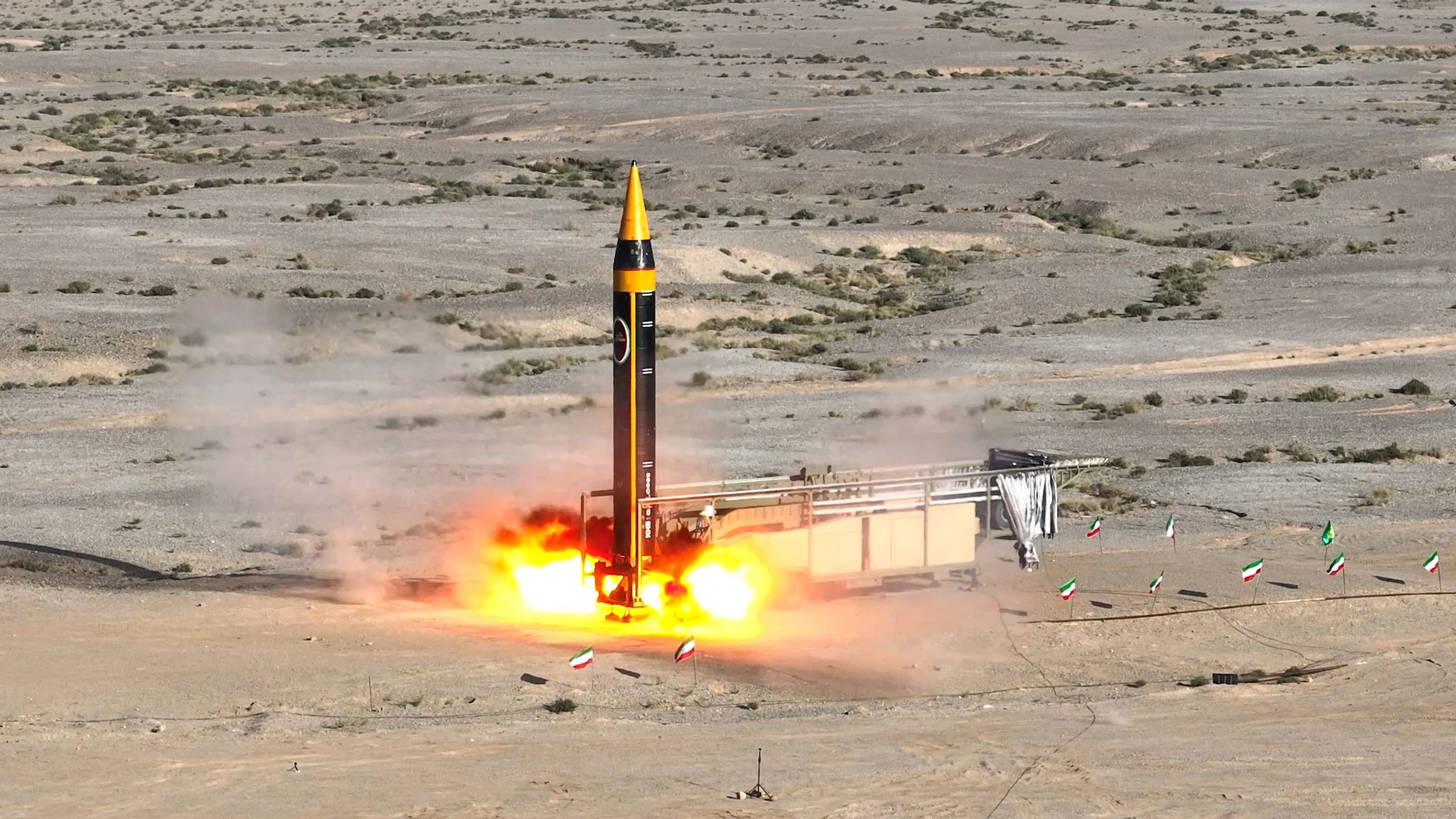Iran successfully tested an advanced hypersonic ballistic missile and it will be unveiled soon, Islamic Revolutionary Guards Corps (IRGC) Aerospace Commander Brigadier General Amir Ali Hajizadeh said.
The homegrown hypersonic ballistic missile was developed by the IRGC Aerospace Force and has undergone all tests, Brigadier Hajizadeh said while addressing an academic meeting in Tehran on May 29, Tasnim news agency reported.
The new missile can bypass all air defence missile systems and target the enemy’s anti-missile systems, he added.
Brigadier Hajizadeh described the development of the projectile as a “great leap in the field of missiles”, and said that the missile can manoeuvre both in and out the Earth’s atmosphere at a speed of around Mach 13.
The general made a similar remark in last November, saying that a hypersonic ballistic missile, which can "maintain high speeds, and manoeuvre in and out of the atmosphere," will be unveiled “soon, and in a good time”.
“This missile can penetrate all anti-missile shields, and I do not think the technology to thwart it will emerge for decades to come. This missile will target anti-missile systems, and is a big leap in the current generations of Iranian missiles,” he said.
In late February, Hajizadeh said that the American military bases in the Middle East are "meat between [Iran's] teeth" and that the US Navy forces in the Indian Ocean, the Red Sea, and the Mediterranean are worthless because they are within the 2,000-kilometer range of Iran's missiles.
He said that these bases and forces are no longer a deterrent and instead constitute a vulnerable target, and he described the strengths of Iran's hypersonic missiles – which he claimed can reach speeds exceeding Mach 10 – and the improvements made to Iran's other missiles.
On May 25, Iran unveiled the new long-range ballistic missile "Kheybar" with a range of 2,000 km and can carry a warhead as heavy as 1,500 kg. This is the latest entry in the Khorramshahr family of ballistic missiles.
The missile takes under 12 minutes to prepare for launch and uses a hypergolic propellant – a type of propellant whose components spontaneously ignite when they come into contact with each other.
The Kheybar precision-guided missile can reportedly hit a speed of Mach 8 (around 9,541 km/h) when in Earth's atmosphere and Mach 12 (14,312 km/h) when it leaves the atmosphere.
Hajizadeh revealed some other features of Kheybar on May 29, saying "Only one missile is fired but when it reaches its target, it hits as many as 80 targets at one time. It means that, if we fire 80 missiles of this variant, as many as 8,000 targets are hit in the enemy's lands," he said.
France accused Iran of violating a UN Security Council resolution endorsing the 2015 nuclear deal after it carried out the ballistic missile test, which was worrying given the "uninterrupted escalation" of Tehran's nuclear programme.
Western governments worry that satellite launch systems incorporate technologies interchangeable with those used in ballistic missiles capable of delivering a nuclear warhead, while Iran has always denied this fact. They are particularly concerned because the UN Security Council resolution 2231, which restricts missiles and related technologies, is effective until October 2023.
The Western powers also agreed to re-install all extra monitoring equipment, such as surveillance cameras, at nuclear sites that were put in place under Iran's 2015 nuclear deal with major powers, but then removed last year as the deal unravelled following the US withdrawal in 2018.
Meanwhile, Iran denies seeking nuclear weapons. It is unclear how much progress there has been and whether Western powers will decide to push for a resolution ordering Iran to cooperate more.
Russia is reportedly using Iranian drones in the Ukraine war, and there are also concerns that Moscow is looking to acquire missiles from Tehran.







 Azerbaijan and Armenia started the process of demarcation of their border on Tuesday, with the installation of the first border markers based on ge...
Azerbaijan and Armenia started the process of demarcation of their border on Tuesday, with the installation of the first border markers based on ge...
 President Aliyev emphasized the critical role of the North-South Transport Corridor in fostering transport cooperation between Azerbaijan and Russi...
President Aliyev emphasized the critical role of the North-South Transport Corridor in fostering transport cooperation between Azerbaijan and Russi...
 Armenian sappers commenced on Monday mine-clearance operations in the territories adjacent to the Saint Mary Church in village of Voskepar (Armenia...
Armenian sappers commenced on Monday mine-clearance operations in the territories adjacent to the Saint Mary Church in village of Voskepar (Armenia...
 Russian Foreign Minister Sergei Lavrov has reasserted that Moscow has no intentions to stop the fighting in Ukraine, even if peace talks commence.
Russian Foreign Minister Sergei Lavrov has reasserted that Moscow has no intentions to stop the fighting in Ukraine, even if peace talks commence.



